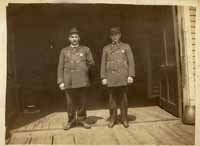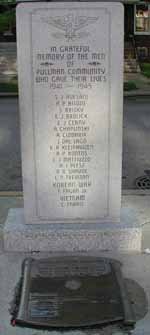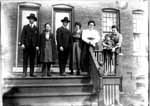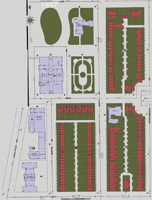The People of Pullman
You are at Home -> The People of PullmanThe People of Pullman
Many, many people -- workers, residents, and travelers alike -- were touched by the Pullman phenomenon. This entire site is made possible by their contributions. Please help us in celebrating the people of Pullman through these research articles.The Pullman House History Project

| Name | Address | Occupation | Birthplace | People of Color |
Enumeration districts of the Pullman area, courtesy of A Look at Cook.
 1900 |
 1910 |
 1920 |
 1930 |
 1940 |
 1950 |
Roseland/Pullman Research Materials: Extractions and Indexes by Janice Helge
Research Narratives About the People of Pullman
 Woodrow Wilson Eisenhart worked for the Pullman Company for 40 years. He was interviewed by Frank Beberdick from December 17, 2001 to March 8, 2002. Click here to read a transcript of their conversation. |
 The world-famous Pullman Band was in existence from 1882 to at least 1928. At one time, the band played at concerts all over the country. Click here to learn more about the Pullman Band. |
 The great flu epidemic of 1918-1919 was a terrible disaster, almost unprecedented in world history, and yet it is topic overshadowed and masked by the tragedy of World War I. Click here to learn more about Pullman and the Spanish Flu. |
 Indoor Baseball -- what we now call softball -- was closely tied to the Pullman Rowing Team. Its development as a sport gives us a good look at sporting activities in Pullman in the 19th century. Click here to learn more about indoor baseball and Pullman. |
 19th century political life was an impassioned, exciting affair. Politics was an integral part of everyday life. Click here to learn more about politics in Pullman. |
 Of course, not all was perfect in Pullman. Crimes -- from robbery to murder -- were (and are) an unfortunate part of life. Click here to learn more about crime in Pullman. Click here to learn about Charles W. Angell, general secretary to the Pullman Company and embezzler. |
The Pullman Militia
Like all civic-minded communities of the time, Pullman was founded with a militia. The militia lasted about 10 years before being absorbed into the National Guard. Click here to learn more about our militia.Lest We Forget
A number of men who worked and lived in Pullman served in the wars of the 19th, 20th, and 21st centuries. Click here to read their stories.THE PULLMAN HISTORY SITE

More Information About the People of Pullman
The People of Pullman
The Pullman House History Project

Arranged by:
Name
Address
Occupation
Birthplace
People of Color
Maps of Pullman
Images of Pullman People
Images of Pullman people
Other Pullman-Related Sites
- Historic Pullman Garden Club - An all-volunteer group that are the current stewards of many of the public green spaces in Pullman. (http://www.hpgc.org/
- Historic Pullman Foundation - The HPF is a non-profit organization whose mission is to "facilitate the preservation and restoration of original structures within the Town of Pullman and to promote public awareness of the significance of Pullman as one of the nation's first planned industrial communities, now a designated City of Chicago, State of Illinois and National landmark district." (http://www.pullmanil.org/)
- The National A. Philip Randolph Pullman Porter Museum is a 501(c)3 cultural institution. Its purpose is to honor, preserving present and interpreting the legacy of A. Philip Randolph, Pullman Porters, the Brotherhood of Sleeping Car Porters and the contributions made by African-Americans to America's labor movement. ((http://www.nationalpullmanportermuseum.com/)
- Pullman Civic Organization - The PCO is a strong and vibrant Community Organization that has been in existence since 1960. (http://www.pullmancivic.org/)
- Pullman National Monument - The official page of the Pullman National Park. (https://www.nps.gov/pull/)
- South Suburban Genealogical & Historical Society - SSG&HS holds the Pullman Collection, consisting of personnel records from Pullman Car Works circa 1900-1949. There are approximately 200,000 individuals represented in the collection. (https://ssghs.org/)
- The Industrial Heritage Archives of Chicago's Calumet Region is an online museum of images that commemorates and celebrates the historic industries and workers of the region, made possible by a Library Services and Technology Act grant administered by the Illinois State Library. (http://www.pullman-museum.org/ihaccr/)
- Illinois Digital Archives (IDA) is a repository for the digital collections libraries and cultural institutions in the State of Illinois and the hosting service for the online images on this site. (http://www.idaillinois.org/)














